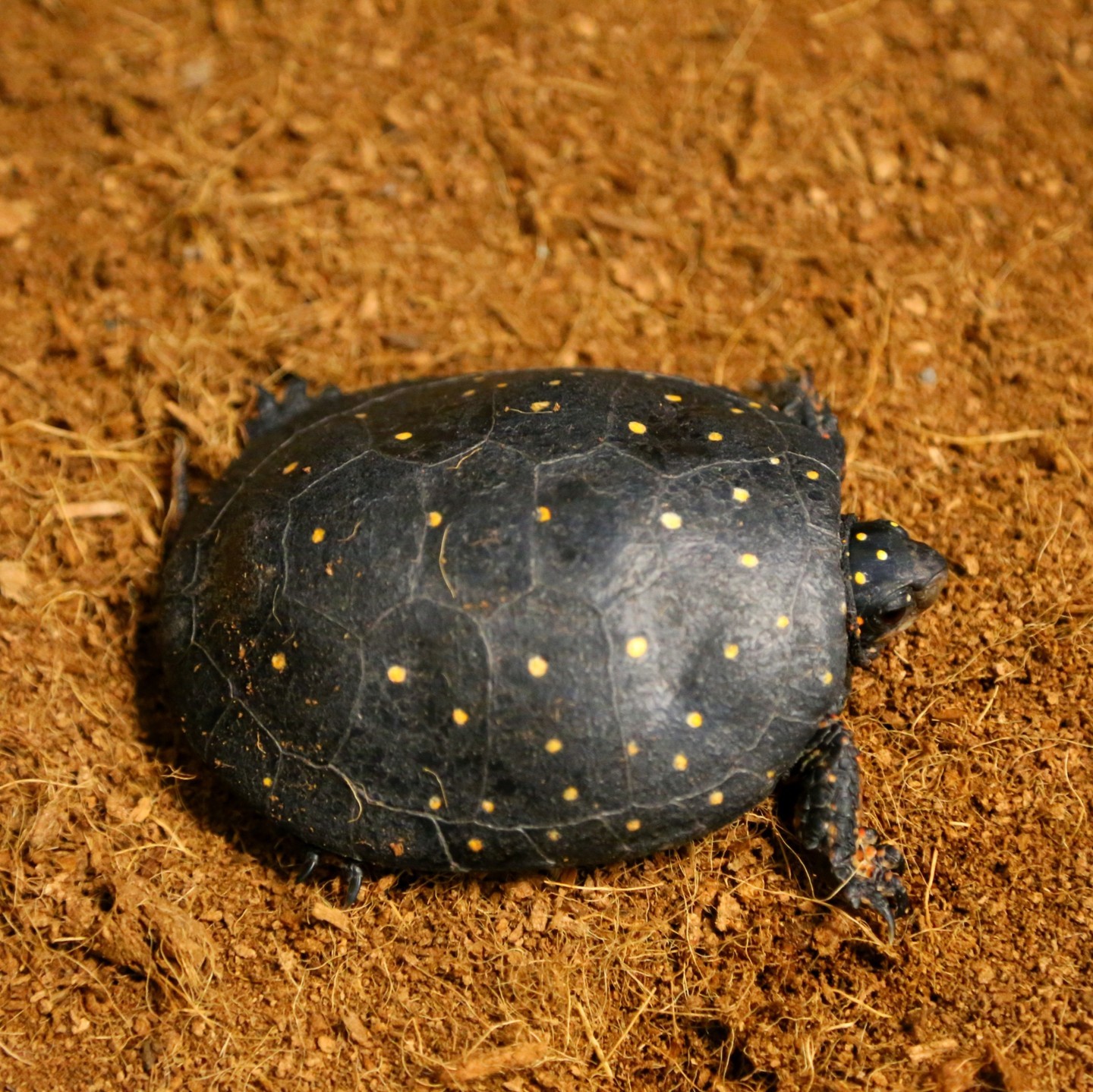- The conservation status of the spotted turtle and its decline amidst environmental challenges
- The specific habitat preferences of the spotted turtle and why these ecosystems are critical
- Threats to the spotted turtle populations and the human impact on their survival
- Efforts in zoo management and wildlife conservation to protect and revitalize spotted turtle populations
- The role of public education and community involvement in spotted turtle conservation
The spotted turtle (Clemmys guttata) is categorized as endangered on the International Union for Conservation of Nature (IUCN) Red List due to its limited range, fragmented populations, and ongoing threats to its habitat. This small, attractively marked turtle has faced a substantial decline, indicative of the broader issues plaguing freshwater habitats across North America.
This species favors shallow aquatic habitats like marshes, fens, bogs, and wooded swamps. These areas are home to a rich diversity of plant and animal life and provide the spotted turtle with suitable foraging, breeding, and hibernating conditions. Their semi-aquatic environments are characterized by their intermittent and shallow water coverage or moisture-saturated soils that support a variety of invertebrates and other prey items crucial to their diet.
However, the spotted turtle’s fragmented habitat exposes it to numerous threats. Wetland destruction and alteration through development projects, pollution, and invasive species have severely impacted these environments—poaching for the pet trade compounds these issues, as does mortality from vehicle traffic on nearby roads.
In response to these challenges, zoo management and wildlife conservation organizations have established captive breeding programs and habitat restoration initiatives. Zoos serve as arks, providing safe havens for breeding spotted turtles away from the perils of their natural environments. These programs aim to bolster wild populations by releasing healthy individuals while maintaining a genetically diverse population in human care.
Cooperation with local communities and stakeholders is pivotal in the conservation equation. Successful wildlife conservation hinges on educating the public about the spotted turtle and its plight. Engaging local communities in habitat preservation, enforcing regulations against poaching, and promoting citizen science are all vital measures to assist in the recovery of this endearing reptile.
Each aspect of these strategies is crucial to the preservation of the species. Real-world examples of such successful efforts include the recovery of habitats through wetland restoration projects that have led to the stabilization and, in some cases, the increase of local populations. Additionally, public education and community science programs have raised awareness and fostered a greater appreciation for the spotted turtle, leading to improved protection and conservation efforts.
In sum, the survival of the spotted turtle is a litmus test for the health of wetland ecosystems and the effectiveness of conservation strategies. By understanding and mitigating the impacts of threats to their survival, deploying strategic conservation actions, and harnessing public support, we can work towards securing a future for the spotted turtle. This endeavor benefits this particular species and contributes positively to the health and biodiversity of wetland ecosystems as a whole, showcasing a commitment to sustaining the planet’s rich tapestry of wildlife.
*****
Source Description
Listed on the IUCN Red List as endangered, the spotted turtle survives only in isolated, localized populations, many of which are in decline. This species favors habitats that are shallow aquatic areas, such as marshes or swamps that are covered intermittently with shallow water or have soil saturated with moisture.


